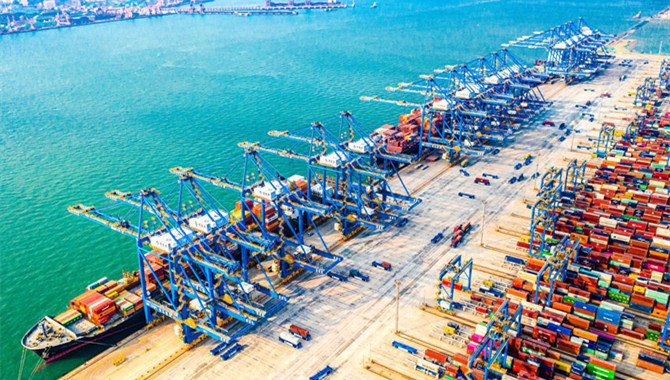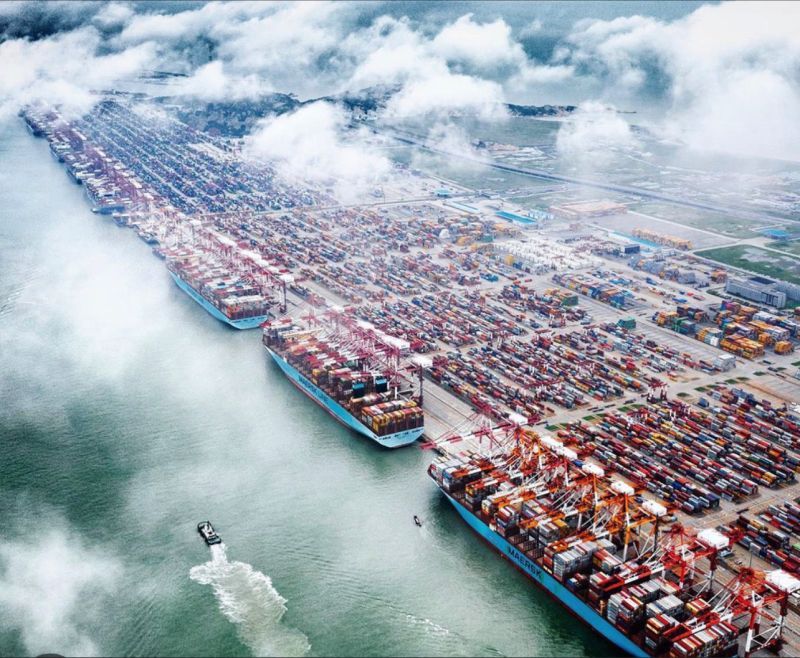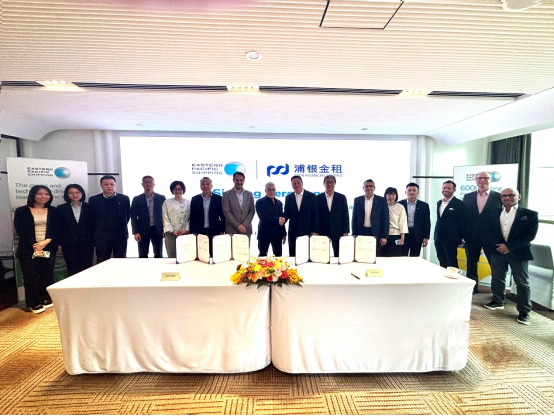Shandong Port Group, the world's largest port conglomerate by cargo capacity, is accelerating its efforts to build a world-class port, as its bold and innovative measures of integrated processes have borne fruit in recent years, top executives said recently.
In January, port areas in the Shandong Port Group reported a good start with strong performance. Its subsidiary Qingdao Port launched four shipping routes to North America. Another subsidiary, Yantai Port, saw its transport of commercial vehicles grow 51.5 percent year-on-year.
The achievements are some of the continuing benefits of an integration process "in which ports in Shandong province have gained new growth momentum and complemented each other's advantages and capacity", said Huo Gaoyuan, chairman of Shandong Port Group.
The group was established in August 2019 and is based in Qingdao, Shandong. It integrated the major ports in the province, including Qingdao Port, Yantai Port, Rizhao Port and the Bohai Bay Port Group.
Before the Shandong group's establishment, port areas in the province developed in their own ways, leading to low-efficiency construction and competition for similar work.
"The integration reform unites more than 60,000 workers and staff members in 21 port areas from seven cities, turning competition into cooperation," Huo said.
For example, Qingdao and Rizhao ports established a platform to jointly operate the ore and coke business, and tugboat resources are shared by Dongjiakou port area of Qingdao Port and Shijiu Port area of Rizhao Port.
Digitalization and innovation have also gained steam in Shandong ports.
"The technology of fully automated container terminals developed by Qingdao Port has been expanded to other port areas," said Li Fengli, general manager of Shandong Port Group.
During the three years or so since its establishment, Shandong Port Group has launched a transportation service network, including shipping routes, freight trains and inland ports. The group launched 127 new shipping routes, bringing its total to 327. It has also built 32 inland ports and connected them with 82 freight train lines.
The port group's transportation service covers areas along the Yellow River, including Shandong province, Central Asia, Europe and the Association of Southeast Asian Nations.
In 2022, Shandong Port Group registered its cargo handling capacity as more than 1.6 billion metric tons. Its container handling capacity exceeded 37 million twenty-foot equivalent units — respective increases of 6.4 percent and 8.7 percent year-on-year, both higher than the national average.
Source: China Daily
The opinions expressed herein are the author's and not necessarily those of The Xinde Marine News.
Please Contact Us at:
media@xindemarine.com


 China’s First Bulk Bunkering of Domestic Green Me
China’s First Bulk Bunkering of Domestic Green Me  Rotterdam and Singapore Strengthen Collaboration on
Rotterdam and Singapore Strengthen Collaboration on  MPA and CMA CGM Sign MoU to Enhance Sustainable Shi
MPA and CMA CGM Sign MoU to Enhance Sustainable Shi  China's Ports Surge Ahead: Major Container Terminal
China's Ports Surge Ahead: Major Container Terminal  Port of Hamburg: Growth in container throughput and
Port of Hamburg: Growth in container throughput and  EPS and SPDB Financial Leasing sign financing agree
EPS and SPDB Financial Leasing sign financing agree